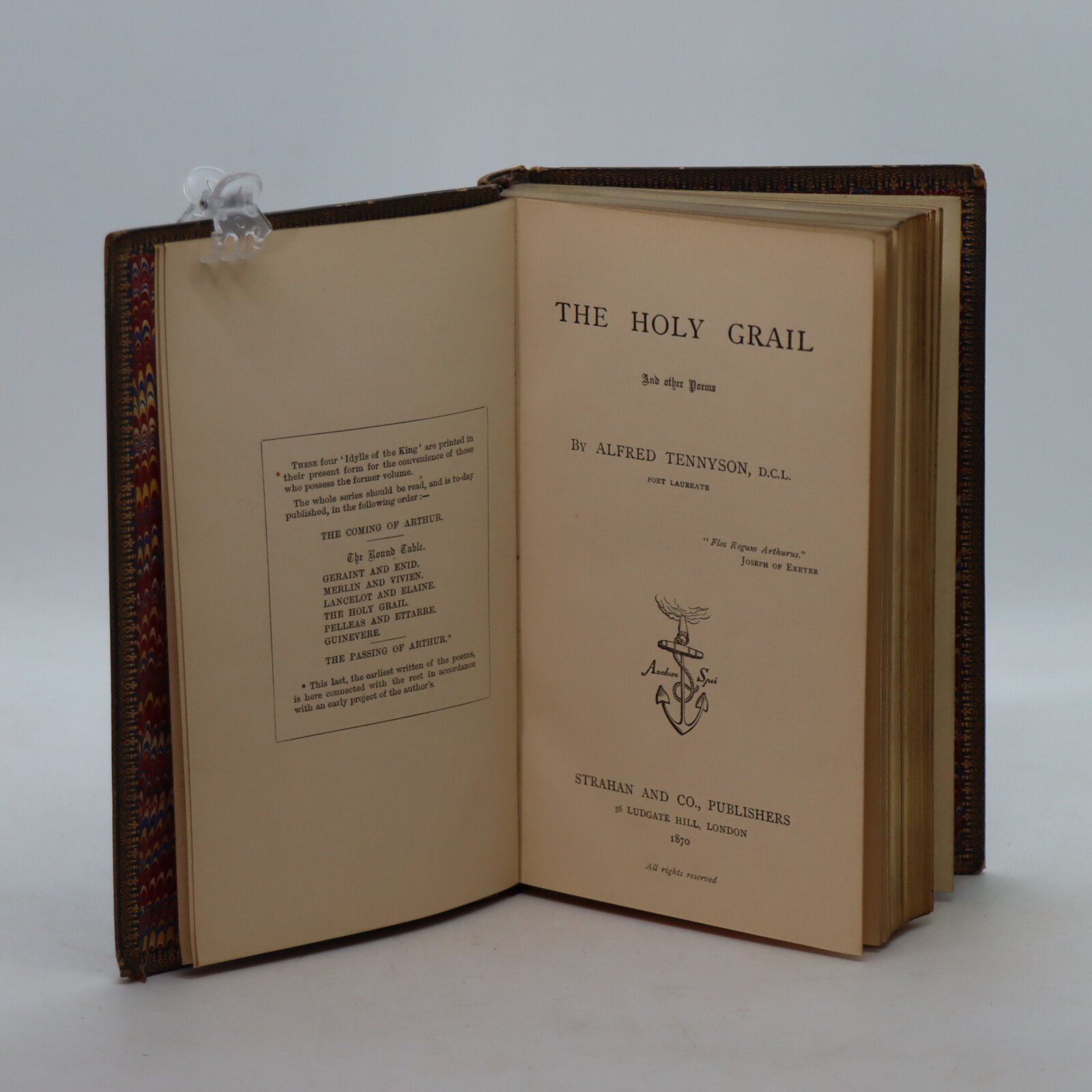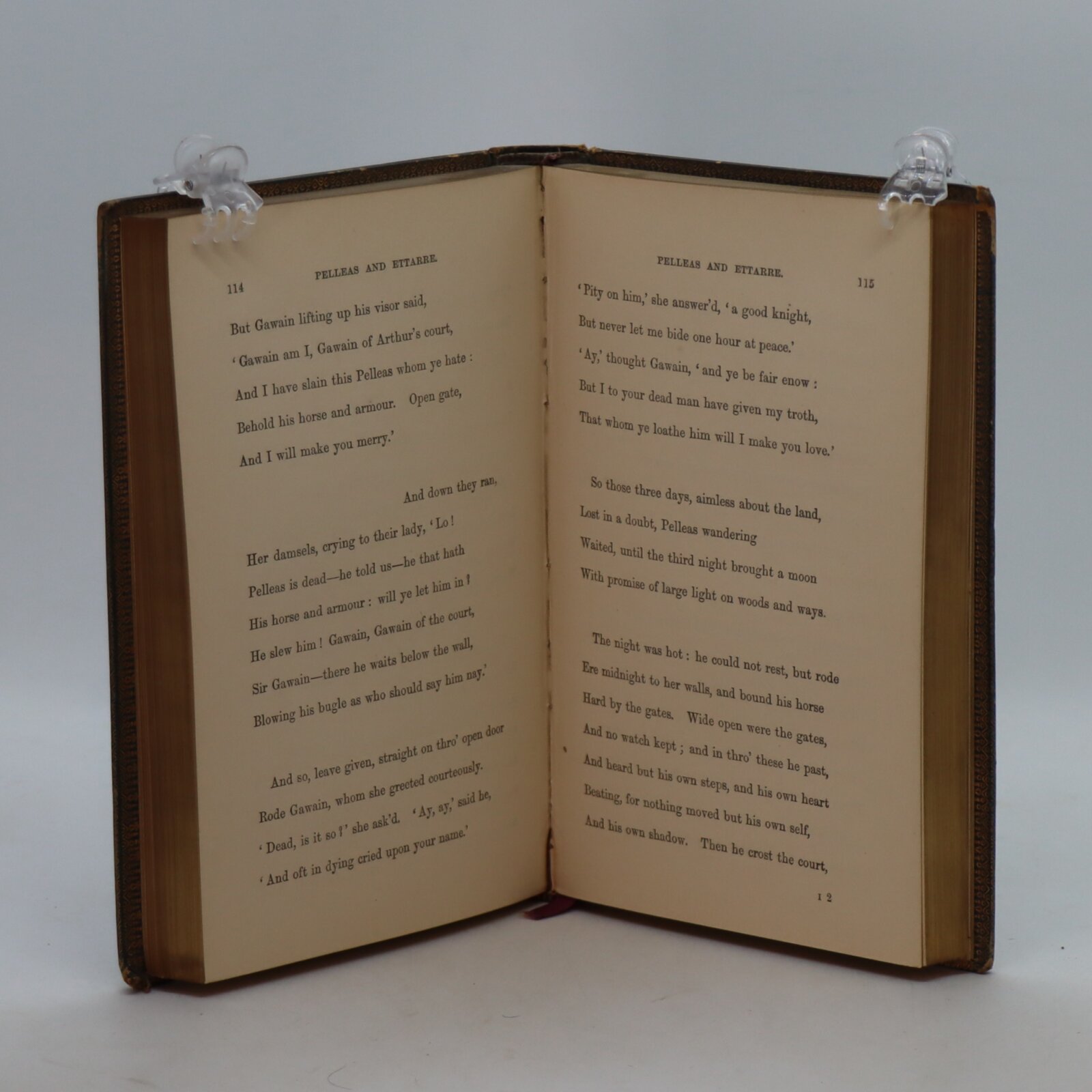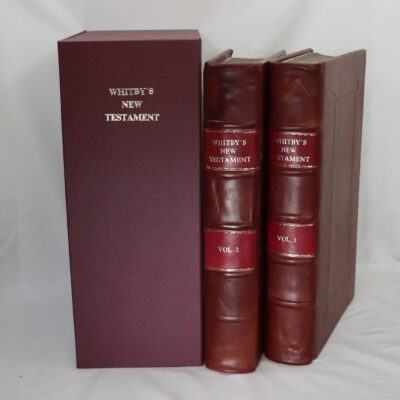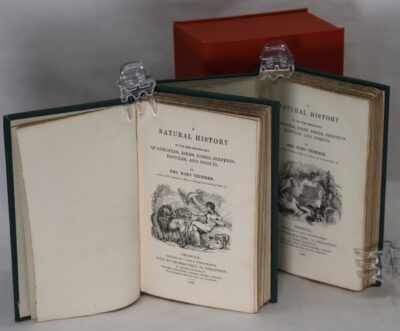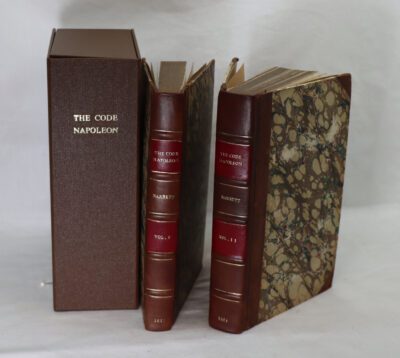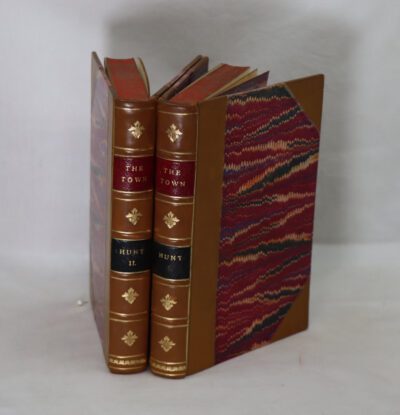The Holy Grail.
By Alfred Tennnyson
Printed: 1870
Publisher: Strahan & Co. London
| Dimensions | 11 × 17 × 2.5 cm |
|---|---|
| Language |
Language: English
Size (cminches): 11 x 17 x 2.5
Condition: Fine (See explanation of ratings)
Item information
Description
Full blue calf with gilt line edging on the boards. Tan spine with raised banding, gilt decoration and red title pates. All edges gilt.
F.B.A. provides an in-depth photographic presentation of this item to stimulate your feel and touch. More traditional book descriptions are immediately available.
The Holy Grail is a treasure that serves as an important motif in Arthurian literature. Different traditions describe it as a cup, dish or stone with miraculous powers that provides eternal youth or sustenance in infinite abundance, often in the custody of the Fisher King. The term “holy grail” is often used to denote an elusive object or goal that is sought after for its great significance.
A “grail”, wondrous but not explicitly holy, first appears in Perceval, le Conte du Graal, an unfinished romance written by Chrétien de Troyes around 1190. Chrétien’s story attracted many continuators, translators and interpreters in the later 12th and early 13th centuries, including Wolfram von Eschenbach, who perceived the Grail as a stone. In the late 12th century, Robert de Boron wrote in Joseph d’Arimathie that the Grail was Jesus’s vessel from the Last Supper, which Joseph of Arimathea used to catch Christ’s blood at the crucifixion. Thereafter, the Holy Grail became interwoven with the legend of the Holy Chalice, the Last Supper cup, a theme continued in works such as the Lancelot-Grail cycle and consequently Le Morte d’Arthur.
Alfred Tennyson, 1st Baron Tennyson FRS (6 August 1809 – 6 October 1892) was an English poet. He was the Poet Laureate during much of Queen Victoria’s reign and remains one of the most popular British poets In 1829, Tennyson was awarded the Chancellor’s Gold Medal at Cambridge for one of his first pieces, “Timbuktu”. He published his first solo collection of poems, Poems Chiefly Lyrical, in 1830. “Claribel” and “Mariana”, which remain some of Tennyson’s most celebrated poems, were included in this volume. Although described by some critics as overly sentimental, his verse soon proved popular and brought Tennyson to the attention of well-known writers of the day, including Samuel Taylor Coleridge. Tennyson’s early poetry, with its medievalism and powerful visual imagery, was a major influence on the Pre-Raphaelite Brotherhood.
Tennyson also excelled at short lyrics, such as “Break, Break, Break”, “The Charge of the Light Brigade”, “Tears, Idle Tears”, and “Crossing the Bar”. Much of his verse was based on classical mythological themes, such as “Ulysses”, although “In Memoriam A.H.H.” was written to commemorate his friend Arthur Hallam, a fellow poet and student at Trinity College, Cambridge, after he died of a stroke at the age of 22. Tennyson also wrote some notable blank verse including Idylls of the King, “Ulysses”, and “Tithonus”. During his career, Tennyson attempted drama, but his plays enjoyed little success.
A number of phrases from Tennyson’s work have become commonplace in the English language, including “Nature, red in tooth and claw” (“In Memoriam A.H.H.”), “‘Tis better to have loved and lost / Than never to have loved at all”, “Theirs not to reason why, / Theirs but to do and die”, “My strength is as the strength of ten, / Because my heart is pure”, “To strive, to seek, to find, and not to yield”, “Knowledge comes, but Wisdom lingers”, and “The old order changeth, yielding place to new”. He is the ninth most frequently quoted writer in The Oxford Dictionary of Quotations.
Want to know more about this item?
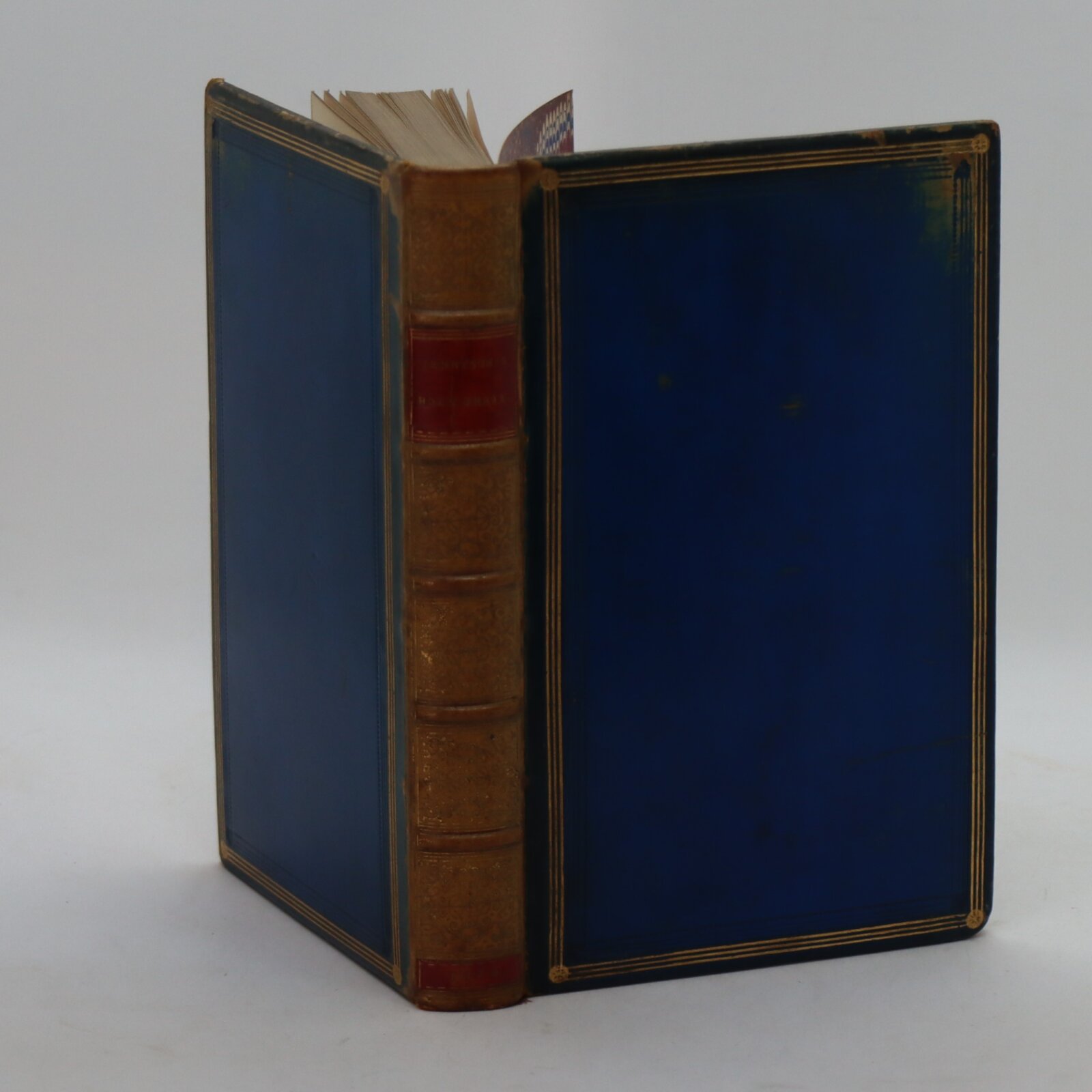
Related products
Share this Page with a friend

